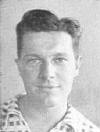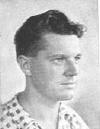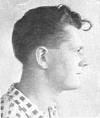Etymology:
Trønder is the designation in Norwegian of any speaker of the dialect Trøndersk, including any inhabitant of Nord- and Sør-Trøndelag, two central Norwegian provinces that are geographically crucial to the distribution of the type in question. Trøndertype is cognate to Swedish Trönde(r)typ in Lundman’s typology.
Other names:
– North Germanic mesocephal, the (K. E. Schreiner)
– Vestlandstypen (C. F. Larsen; No., “the Western Country type”)
Origins:
In the Upper Paleolithic, parts of the Scandinavian Peninsula were inhabited by large-framed, robust Cro-Magnids, similar to the modern Dalo-Falid and “Brünn” varieties. As time passed, continual interbreeding with later (and perhaps earlier) arrivals contributed to a decrease in the number of “pure” populations of this type (yet relatively unaltered forms may be found e.g. in certain mountain isolates, and individuals nearly everywehere in Scandinavia do not seldom recapitulate fully Cro-Magnid features). The most important arrival, in this respect, was that of the Battle-Axe and Boat-Axe peoples, who carried with them the Corded type, a tall, high-headed, dolichocephalic leptosome of the eastern steppes, which was perhaps more closely related to members of the Mediterranid parafamily than to the aforementioned Cro-Magnids. This type was probably material to the formation of the Iron Age Nordid types in general, but in the central regions of the Scandinavian Peninsula (entering from the northeast) it played a particularly interesting role, as it combined with local Cro-Magnids to form the special form known as the Trønder type. This type has retained much of its Corded prevalence in the central Swedish and Norwegian provinces, becoming increasingly Cro-Magnid toward the sothwestern parts of Norway, a distribution indicative the historical dispersal of the Battle-Axe and Boat-Axe peoples in the peninsula. The Trønder population has thus evolved as a gradient type, internally variable yet mostly stabilized. The average Trønder is a Corded-Cro-Magnid intermediate, a Nordid approximation, combining traits from both formatives with varying amounts of Hallstatt Nordid and Borreby strains.
Description:
The Trønder is a variable strain, ranging in type from large, Irish-looking Cro-Magnid individuals (cf. Brünn) and tall, slender Battle-Axe survivors (Corded type), to almost completely Nordid populations (to the point at which it is more sensible to talk about Trønder-influenced Nordids).
The eastern central Swedish provinces, and the central Norwegian provinces of Nord- and Sør-Trøndelag, form the northeastern geographical extreme of the Trønder type, which is characterized by great vault height (reflecting Corded prevalence). This type is concentrated in the valley of Orkdal in Sør-Trøndelag, predominating as a population element in all territories north of the Dovre mountains, from Nordmøre in the west, through Jämtland and all the way to the Baltic coast. The western and southwestern Norwegian inland population continues the type in in most anthropological respects, but the Cro-Magnid element gains in importance the further one gets from the Orkdal area. One exeption to this rule is the population of Hardanger, members of which seem much more fully Corded and much less Cro-Magnid than adjacent Trønders. Cro-Magnid prevalence establishes a Trønder end-type in the southeastern region of Setesdal (Valle type).
The Trønder is the tallest Scandinavian type (with the exception of the Tydal type, which is at any rate a marginal phenomenon), which accordingly makes it one of Europe’s tallest. It is a slender type, although not as slender as the local Hallstatt Nordid, and its bones are larger and heavier than what is considered typically Nordid. Sexual dimorphism is strong, and Trønder females are seldom correspondingly big-boned, but pedomorphism is less common than in Nordids proper, and robust females are not uncommon. The head form is high mesocephalic (c.i. typically 78-80; with the exeption of the “Hardanger type”, which is dolicho-mesocephalic), and the face is of considerable length. The forehead is very high, and at the same time both broader and much less sloping than that of the Hallstatt Nordic. Frontal bosses, a non-Nordic trait, are frequently found, and the temporal region is much fuller. In addition, the transitions from frontal to temporal and frontal to parietal regions are smooth and difficult to find, whereas on the Nordid head they are clearly marked.
The nose is typically straight or convex, with a wide display of wavy forms (the “Hardanger type” is, for instance, frequently convex-nosed), and the transition between bone and cartilage is difficult to locate without palpation (feeling with the fingers), another feature which serves to distinguish the general Trønder type from the local Nordid.
The zygomatic arches of the Trønder type are less prominent than those of the Hallstatt Nordid, and the gonial angles are compressed and not visible. The skull is more rounded and the occiput less prominently curved than that of the Nordid type.
The Trønder is typically blue-eyed, and light-mixed blue is the predominant color. The hair is wavy and ranges in color from darkish brown to golden blond. Rufosity is common, whereas ash-blond shades, a typical Hallstatt Nordic trait, are rarer. The skin is coarser in texture and tougher than regular Nordid skin, and the hair is more abundant on beard and body.
On the whole, Trønder types give the impression of more robust, powerful and masculine Nordids.
Illustrations:
Examples from The Races of Europe Examples from Nordens Rastyper: Geografi
(Carleton S. Coon 1939): och Historia (Bertil Lundman):
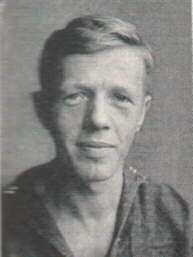
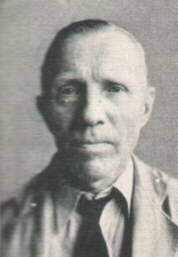
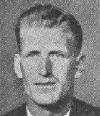
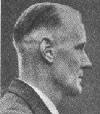
(Two individuals from Bergen, (Two individuals from northern Svärdsjö
Norway; both tend toward Cro- and Enviken in Dalarna, Sweden; both
Magnid and Nordid, rather than tend toward Corded and Nordid rather
Corded) than Cro-Magnid)
Examples from Dalarnas Folk – Typer och Härstamning (Bertil Lundman):
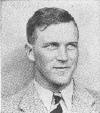
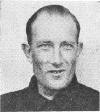
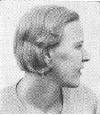
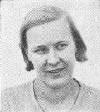
(From Ore in Dalarne, Sweden; Corded, Cro-Magnid and Nordid elements are
all present in various combinations)
Examples from Die Somatologie der Norweger (K. “Valle type” (The Races of Europe,
E. Schreiner): (Carleton S. Coon 1939):
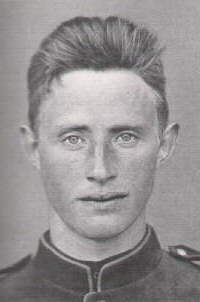
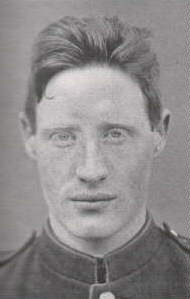
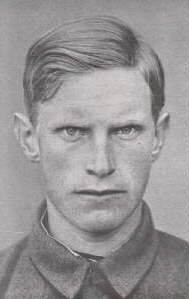
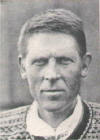
(“Hardanger types” from Hardanger, Norway) (Valle, Norway)
Celebrity examples:
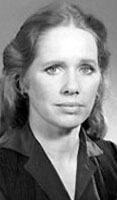
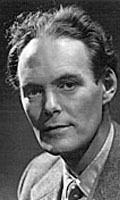
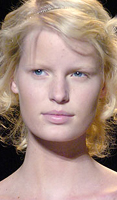
Liv Ullmann Agnar Mykle Caroline Winberg
(Norway) (Norway) (Sweden)
Non-Scandinavian Trønder approximations or descendants:
 (England) |
Example from The Races of Europe (Carleton S. Coon 1939):
|
*
|
Geographical distribution:
The Trønder type proper is essentially restricted to the Scandinavian peninsula. The zone of maximal concentration stretches from eastern central Sweden, through the provinces of Trøndelag, and southwestward from there on until it approaches the southern Norwegian coastal areas. Coastal settlements are characterized by a prevalence of Trønder types in the innermost reaches of the fjords (e.g. the “Hardanger type”), contrasted with the significantly more brachycephalic (Borreby and Strandid) populations that inhabit the islands and promontories. Trønders are by far the most common element in the Norwegian population, whereas the Swedes are predominantly Nordid.
Most of the Norwegian Vikings who settled in Iceland, Scotland, and northeastern England, were from the western part of the country, where Trønder types predominate. Accordingly, Trønder-like types are frequently seen in areas of erstwhile Norse settlement.
(*) In the Baltics, bordering on the Scandinavian peninsula, Trønder-like types are not uncommon. A combination of Corded and local Cro-Magnid elements, nowadays represented by the largely unreduced West-Baltids (an eastern Dalo-Falid or Brünn cognate), has resulted in a Baltic Trønder approximation. This could be the type referred to as “Aistin” or “Aisto-Nordid” by Lundman, and “Fenno-Nordid” by others.
Special subtypes:
– Orkdal type
– Hardanger type
Related or similar types:
– Corded
– Hallstatt Nordid
– Brünn
– Baltic Trønder approximation (“Aistin”?)
